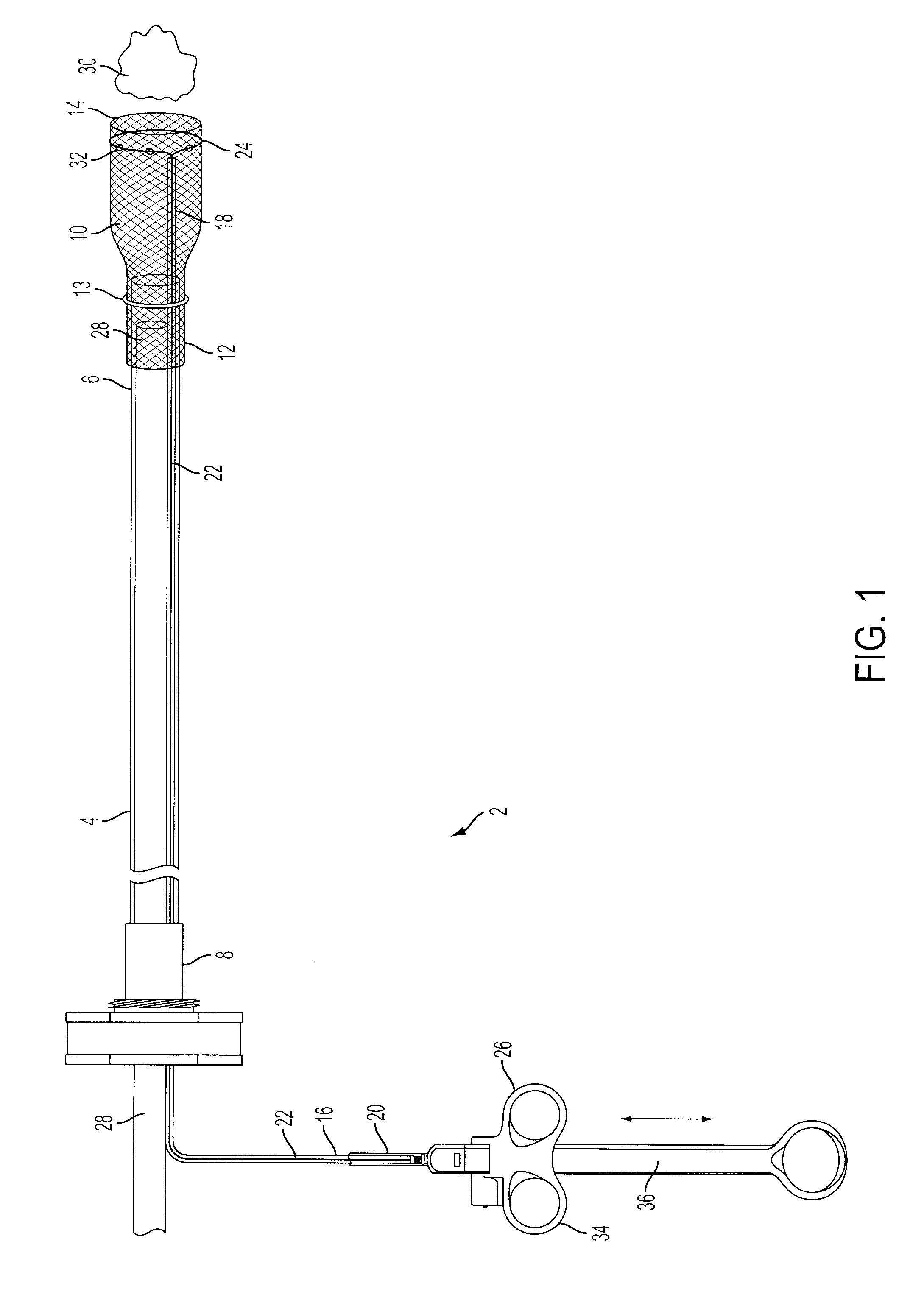Apparatus and method for removal of foreign matter from a patient
a technology for foreign matter and patient, applied in the field of foreign matter removal, can solve the problems of food bolus breaking, food bolus breaking, and common problem of esophageal food impaction,
- Summary
- Abstract
- Description
- Claims
- Application Information
AI Technical Summary
Benefits of technology
Problems solved by technology
Method used
Image
Examples
Embodiment Construction
[0011]The preferred embodiments of the present invention will now be described with respect to the Figures. FIG. 1 illustrates a preferred embodiment of the present invention. The apparatus 2 includes an overtube 4, which is adapted to be slidingly inserted into a patient's esophagus in order to remove a food bolus 30 that has become lodged therein. The overtube is a thin, flexible lighted tube as known in the art and is typically used for insertion into the esophagus for performing an endoscopy. For example, an overtube such as one known as the GUARDUS OVERTUBE from US ENDOSCOPY may be implemented as described herein. An endoscope 28 is mounted through the overtube 4 as known in the art, and has a camera and light mounted for obtaining images of the internal area under surveillance and assisting the operator in guiding the overtube (not shown for simplicity).
[0012]The overtube 4 has an overtube insertion end 6, which is the end that will be inserted into the esophagus of the patien...
PUM
 Login to View More
Login to View More Abstract
Description
Claims
Application Information
 Login to View More
Login to View More - R&D
- Intellectual Property
- Life Sciences
- Materials
- Tech Scout
- Unparalleled Data Quality
- Higher Quality Content
- 60% Fewer Hallucinations
Browse by: Latest US Patents, China's latest patents, Technical Efficacy Thesaurus, Application Domain, Technology Topic, Popular Technical Reports.
© 2025 PatSnap. All rights reserved.Legal|Privacy policy|Modern Slavery Act Transparency Statement|Sitemap|About US| Contact US: help@patsnap.com



